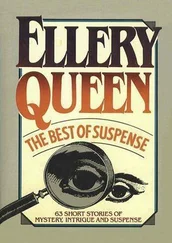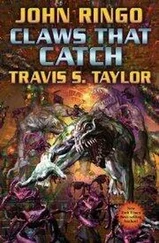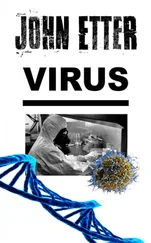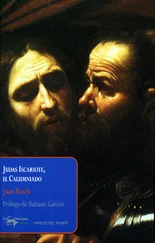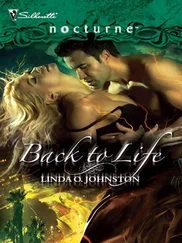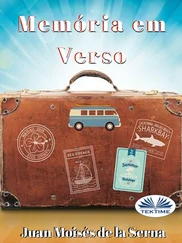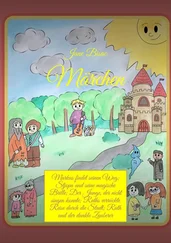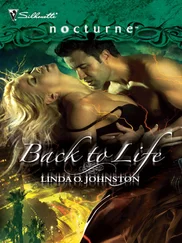4Adenovirus, negative stain E.M.
5Tobacco mosaic virus E.M.
6June Almeida
7John Zahorsky
8Norovirus E.M.
9Albert Kapikian
10Ruth Bishop and Thomas Flewett
11Rotavirus in stool E.M.
12Albert Coons
13Clinical specimen diagnosed as RSV, fluorescent-antibody stain
14Phillip Gardner
Chapter 8
1Jaundice
2F. O. MacCallum
3Winston Churchill, Franklin D. Roosevelt, and Joseph Stalin at Yalta, 1945
4Baruch Blumberg
5Rosalyn Yalow and Solomon Berson
6Eva Engvall, Peter Perlmann, Anton Schuurs, and Bauke van Weemen
7Harry Towbin, Julian Gordon, and Gordon’s group
8F. Brown
9Georges Kohler and Cesar Milstein
Chapter 9
1Oswald Avery
2Erwin Chargaff
3Rosalind Franklin
4Linus Pauling
5Francis Crick and James D. Watson
6Drawing of a DNA double helix
7“AIDS doesn’t sleep,” Russian poster
8Françoise Barré-Sinoussi and Luc Montagnier
9Harald zur Hausen
10Kary Mullis
11Political cartoon, 1919 influenza pandemic
The idea for this book emerged following the memorial service organized by Marie L. Landry in 2006 for Gueh-Djen (Edith) Hsiung at the Historical Library, Yale University School of Medicine. Dr. Landry strongly encouraged the concept of the book and has provided crucial guidance, critiques, and advice throughout. We are greatly in her debt.
The editorial staff at ASM Press has provided insight and creative encouragement throughout the long gestation of the book. Jeff J. Holtmeier, the Editor-in-Chief at the book’s inception, guided the development of the concept and provided patient encouragement. Christine Charlip, his successor, encouraged us to enlarge the audience from one that was primarily technical in orientation to one with broad interests in science and medicine. Thus encouraged, we sought illustrations to complement the text and to provide appeal to a broader readership. John Bell, our production editor, has facilitated that shift by creative suggestions, sound editing, and good humor. We also thank artist Debra Naylor for her creativity in collaborating on the book cover design.
Conversations, face to face, by emails, or by letter, with virologists and others whose work has a bearing on virological infections have played a major role in shaping our understanding of how the field of diagnostic virology evolved. These individuals included Warren Andiman, Jangu Banatvala, Edward A. Beeman, Leonard N. Binn, F. Marilyn Bozeman, Irwin Braverman, Charlie Calisher, Dave Cavanagh, Gustave Davis, Walter Dowdle, Bennett L. Elisberg, Margaret M. Esiri, Durland Fish, Bagher Forghani, Harvey Friedman, D. Carleton Gajdusek, J. Robin Harris, David L. Hirschberg, Richard L. Hodinka, Robert Horne, Albert Z. Kapikian, Robert J. T. Joy, Edwin D. Kilbourne, Jung H. Kim, Diane S. Leland, W. Ian Lipkin, Dick Madeley, Kenneth McIntosh, Michael B. A. Oldstone, Stanley Plotkin, Morris Pollard, Philip K. Russell, Karen-Beth G. Scholthof, Gregory Tignor, and Alex Tselis.
Historians and curators are the guardians of the traces of our past, and several have provided indispensable help. At Yale, Toby Appel, Melissa Grafe, Frank Snowden, and Susan Wheeler were expert and gracious. Elsewhere, Steven Greenberg, Col. Richard C. V. Gunn, Sally Smith Hughes, and Sarah Wilmot provided invaluable guidance.
Because of their associations with virologists, by birth or profession, certain other individuals provided important pieces of information. These included Mary Emma Armstrong, Jean Saperstein Beeman, Kevin Breen, James A. Poupard, James W. Reagan, David R. Scholl, and Kenneth Wertman.
We are not the first to note this, but there must be a special place in heaven for archivists and specialist librarians. Several of the staff at the Yale Medical and Historical Libraries were particularly helpful. Mary Angelotti was exceptionally resourceful in locating documents at Yale and elsewhere and generous in explaining the means of access. Florence Gillich effortlessly facilitated access to the riches of the Historical Library holdings. At other institutions, Barbara Faye Harkins, Leigh Mantle, Barbara J. Niss, Stephen Novak, and Alycia J. Vivona responded to repeated pleas for help, providing answers, documents, and guidance.
Mary Ann Booss and Brigitte Griffith offered expert advice in translating scientific publications in French, while Carolin I. Dohle provided expert translations of scientific publications in German.
A number of individuals provided help above and beyond the call of duty to secure especially difficult-to-find figures or provided critical help in developing the manuscript. Zhe Zhao, Dr. Hsiung’s grandniece, was kind enough to provide the portrait used with the dedication. Special thanks are extended to Paul Theerman and Ginny A. Roth at the National Library of Medicine for providing many high-resolution images from the library collection. Others included Joyce Almeida, Debbie Beauvais, Claire Booss, Robert B. Daroff, John and Donna Jean Donaldson, Will Fleeson, Emma Gilgunn-Jones, Tina Henle, Albert Z. Kapikian, David Keegan, Edwin Paul Lennette, Rich McManus, Venita Paul, Thomas Ruska, and Irving Seidman.
It seemed particularly important to gain an understanding of the first diagnostic virology and rickettsiology labs established anywhere. The first was established in January 1941 at the Walter Reed Army Medical Center. In investigating the establishment and operation of that laboratory, we had exceptional support from committed and knowledgeable personnel. We extend special thanks to Michael P. Fiedler, research librarian, Andrew H. Rogalsky, archivist, and Leonard N. Binn, whose career in virology at Walter Reed spans over five decades. The first diagnostic virology and rickettsial lab in the U.S. civilian sector was at the State of California Public Health Labs. We are grateful to Bagher Forghani for generously and graciously providing a full understanding of that very important lab and its leaders.
Finally, the book could not have been written without the support of J.B.’s family. Months turned into years, and stacks of books and reprints turned into multiple file cases. Yet patience and encouragement were constant. Mary Ann offered insights from her public health work, Dave recurrently provided much-needed computer support, and Christine provided a West Coast haven when the research moved west. J.B. is humbled and grateful for their support. M.J.A. was continually cheered by her dear father, Ralph August, by friends near and far away, and by her Let’s Look at Art docent colleagues at the San Jose Museum of Art.
This book traces the growth of diagnostic virology from its beginnings over a century ago to the present: the scientific discoveries, the blind alleys, the missteps, the epidemics that gave urgency to the quest, the technological advances, and the unique individuals whose commitment and hard work were the keys to progress.
The idea for this book first arose at a memorial service for Dr. Gueh-Djen (Edith) Hsiung, a leader in clinical and diagnostic virology who died in 2006 and in whose laboratory the authors and I had all trained. To us, Edith Hsiung embodied the enthusiasm, dedication, and perseverance of an older generation who, sadly, had died or were dying and whose stories were being lost. John Booss, to his great credit, has been the driving force behind this project, traveling the country to research historical archives and interview key people. He was fortunate to enlist Marilyn August, a diagnostic expert and science writer who is a key contributor to this important endeavor. Although a diagnostic virologist myself, I knew little of the history of the field and thus have learned a tremendous amount reading the material they have unearthed and presented in this fascinating book.
Читать дальше

